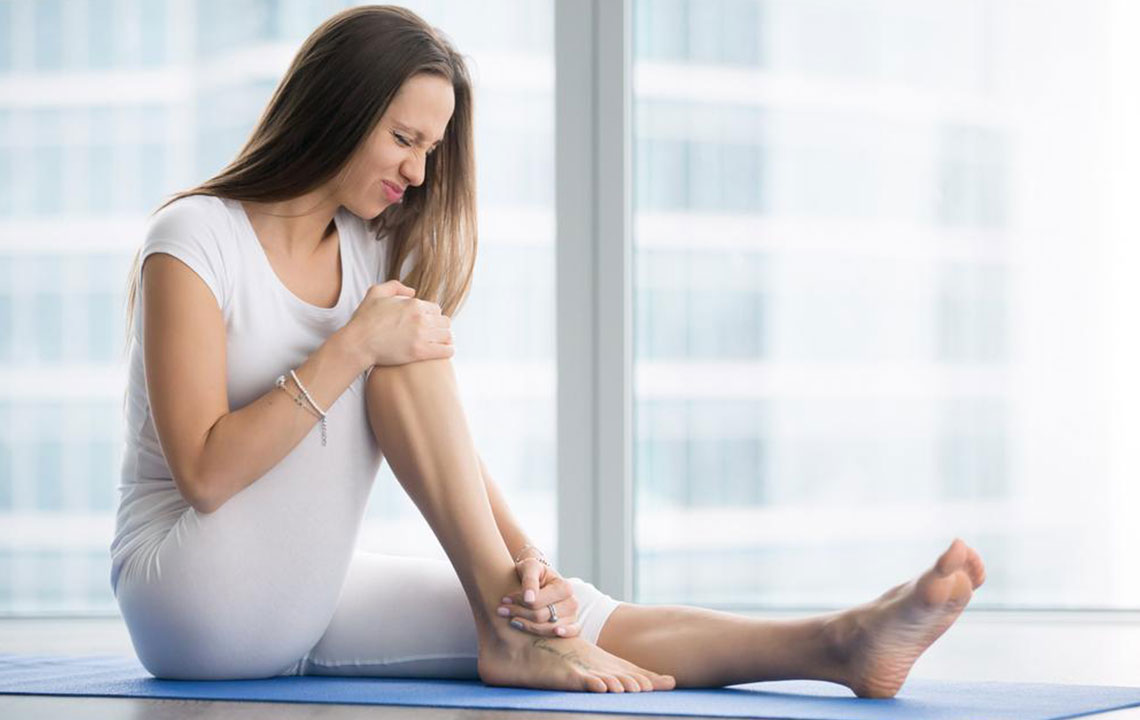Common Symptoms of Leg Pain You Should Not Ignore

The lower parts of our legs are the ones that keep us standing, walking and running as we go through everyday life. There are many factors that affect the health of our legs—the kind of surfaces we walk on, the kind of shoes we wear, our posture, occupation, overall weight, etc. All this means that on more than one occasion, a person may experience leg pain symptoms.
Some common leg pain symptoms and causes include:
Aches related to the bones, joints, and muscles
Muscle cramp
A muscle cramp is also known as Charley’s horse and can occur any time on its own. It can occur in the middle of the night or during the day. The pain due to a muscle cramp is often described as a tight grip around one’s muscle, usually the calf muscle. Once it takes a group, it can get worse in the form of an intense, tight lower leg pain. The main cause of this type of leg pain is dehydration and general tiredness. Some common remedies to deal with leg pain symptoms of this sort is to increase the intake of water, massage the affected muscles, and also to do a good round of stretching and warming up before exercise.
Shin splints
Shin splints are a kind of pain usually experienced on the front of the calf muscle. It usually occurs when the flesh and muscles along the edge of the shin bone get inflamed, making walking, running, or jumping very difficult. Shin splints usually occur when the same activities are repeated over and over again on hard surfaces.
People with flat feet or feet turned outward also tend to experience shin splints. Some common remedies to fix the pain related to shin splints are the intake of anti-inflammatory medicines that include naproxen, aspirin, and ibuprofen and the application of ice. You can buy all these items over the counter from a drug store. A doctor should be visited in case the pain does not subside with these remedies. One should avoid engaging in any activity that makes the pain worse and do some leg stretching once the pain subsides a little. Avoiding hard surfaces for a while when possible and wearing comfortable shoes are other methods to prevent pain.
Tendinitis
Pain in the lower calf near the back of the heel is the first sign of a possibly inflamed Achilles tendon. Inflammation in this part is a common injury that makes the tendon in the foot tear, swell, or stretch. This injury usually occurs due to the overworking of the calf muscle.
Some remedies for pain relief from tendinitis include applying ice to the affected area, taking anti-inflammatory medications prescribed by a doctor, and gently stretching the leg when the pain subsides.
In case the pain is unbearably severe, there is a chance that the Achilles tendon may be torn. Another sign of a torn tissue is having trouble with pointing the toe downwards. A doctor may have to inject medicine into the inflamed muscle to ease the pain, and surgery may also be required to fix the problem from getting damaged further.
Broken bones or sprains
In case of broken bones or a sprain, the leg pain symptoms can get very severe. In case of such an event, the RICE treatments should be executed as first aid till a doctor can be approached. Rest, ice, compression, and elevation together are called RICE. In case of a more severe sprain or broken bones, ice should be applied to the affected area, and a doctor should be approached immediately. Such cases may require a more intensive treatment in the form of a leg brace, cast, or other stabilizing treatment. In comes cases, physical therapy may also be required. Usually, the injury gradually heals over a period.
Aches related to veins and clots
Blood clot
A clot occurs when the blood in a given vein thickens clumps together. Similarly, pain that develops in a vein located deep within the body is known as deep vein thrombosis (DVT). The deep vein blood clots usually occur in the lower leg or the thigh area and usually occur due to long periods of inactivity, like a long car ride or a long flight. People who are overweight, smokers, or take blood thickening medicines are also more prone to deep vein thrombosis which often manifests as a painful condition. Any suspicion of a blood clot should be reported to the doctor immediately. Some common measures for easing the leg pain symptoms caused by vein blood clots include weight loss in case of overweight people, wearing support stockings, and taking the appropriate medications.
Leg pain symptoms mostly manifest as trouble in movement, acute pain, or general non-conformity from regular movements and should be shown to a doctor if they persist for too long.


